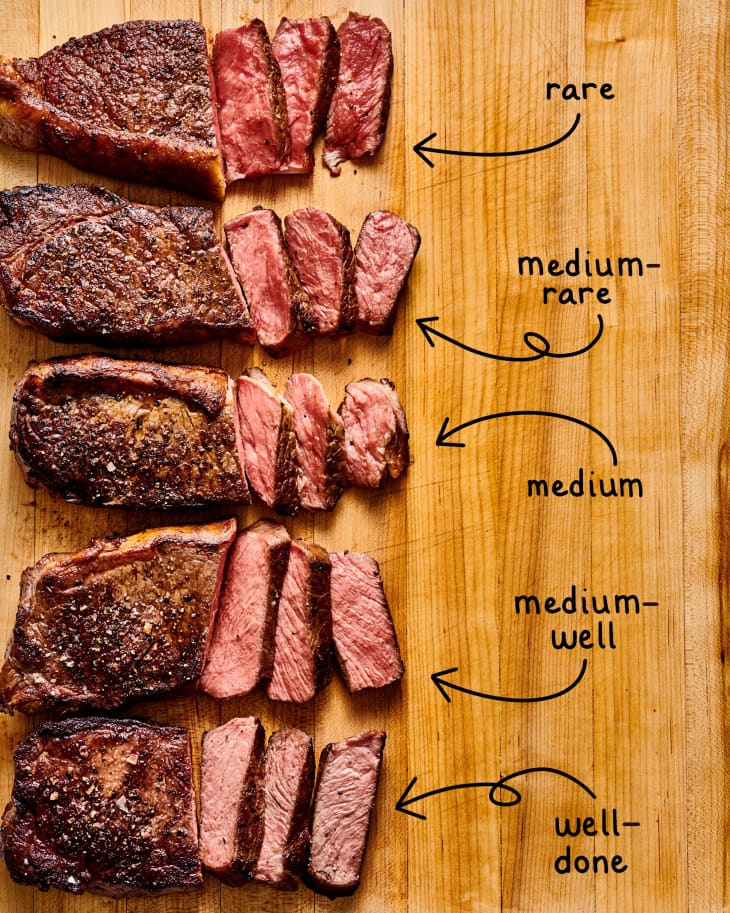 All About Steaks
All About Steaks
The Best Cuts
For grilling, broiling, and pan frying, the best cuts of meat are rib eye steaks, strip or shell steaks, and tsp. bone, which contains both the strip and tenderloin steaks. Sirloin and round steaks are generally going to be tough and dry. Flank steaks are good when quickly cooked and sliced across the grain, as described above.
For roasting, top sirloin, tenderloin, standing rib roasts, and top rump roast are good candidates.
For stir frying, flank, top round, and sirloin steak are good. These cuts are best cooked quickly, and since elastin is broken because the meat is cubed, they are more tender.
For kebabs, tenderloin is the best bet. This mild cut absorbs flavors easily and it is very tender.
For pot roasting and braising, chuck and rump are the best cuts. These cuts have more collagen and need long, slow cooking in a wet environment to reach their optimum tenderness. Chuck has the most flavor and is the most tender.
For ground beef, chuck is the way to go. It has optimal amounts of fat and is tenderized mechanically by the grinding action. Most lean ground beef is chuck, but if you’re not sure, ask!
How to Buy Steak
Before you begin cooking, pick the cut of meat that best suits your dinner plan. Tender, less lean cuts are perfect for the grill and are delicious plain or dressed up with sauces. Leaner, chewier cuts become more tender and delicious when marinated, thinly sliced, and grilled quickly or braised.
For any cut of steak, look for red meat with white fat that is marbled evenly across the grain.
Prime grade meat (the highest grade) is tender and highly marbled. Unfortunately, prime grade is expensive and difficult to find. The average supermarket carries choice grade meat as well as the less flavorful, and less tender, select grade. The best steak you can buy is dry-aged in special meat coolers to develop the flavor and tenderize the meat. Most beef, however, is wet-aged, if aged at all, in vacuum-packed bags for one to four weeks. This process improves the tenderness of the beef, but does not improve the flavor.
Testing for Doneness
The best way to tell if a steak is done is to (carefully!) touch or squeeze the meat itself.
Rare meat feels a bit like the texture of the flesh between your thumb and index finger; medium meat has a slight spring to it; well-done meat is firm.
You also can check by cutting a small slice into your meat with a thin knife.
If you have an instant-read thermometer, the internal temperature for rare steak is 125 to 130 degrees, medium-rare is 130 to 140 degrees, medium is 140 to 150 degrees, and well done is 165 degrees.
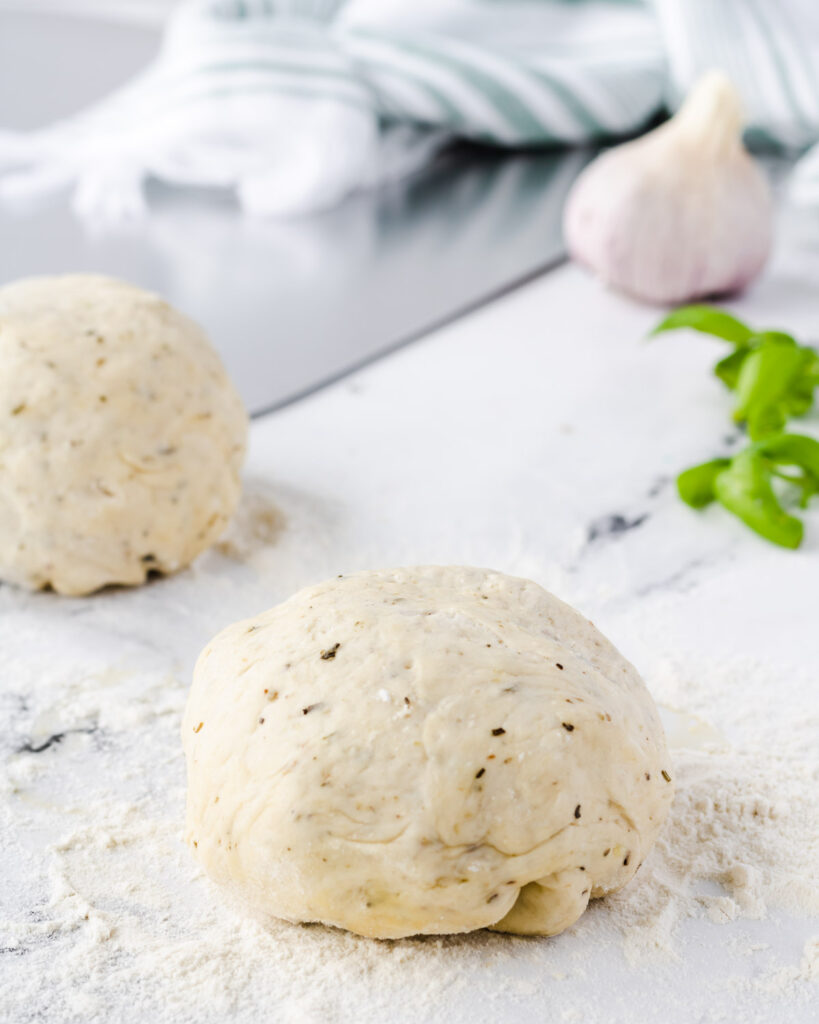 1 T. Active Dry Yeast
1 T. Active Dry Yeast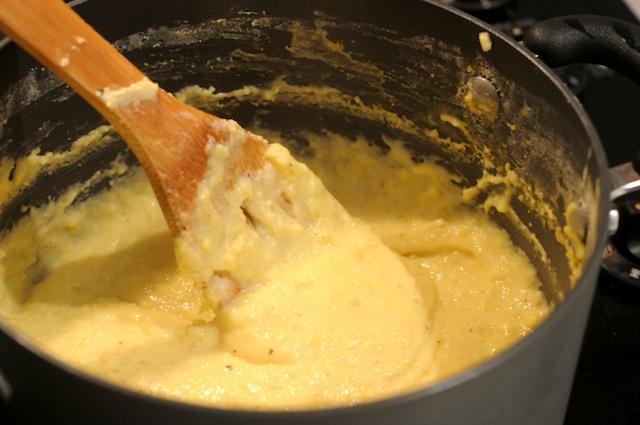
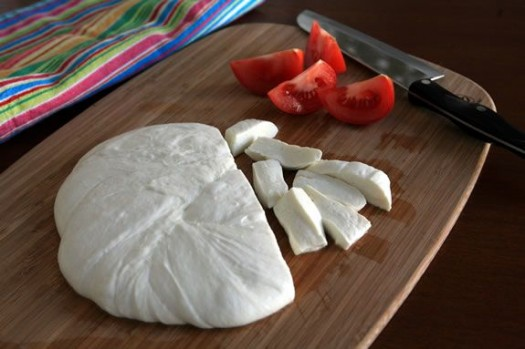
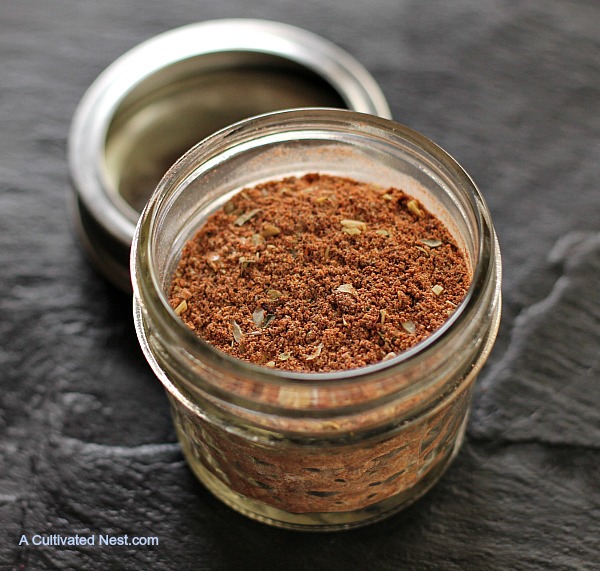
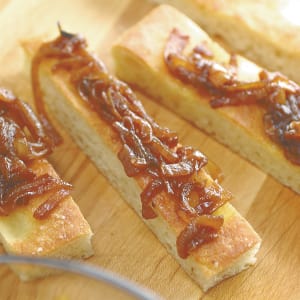
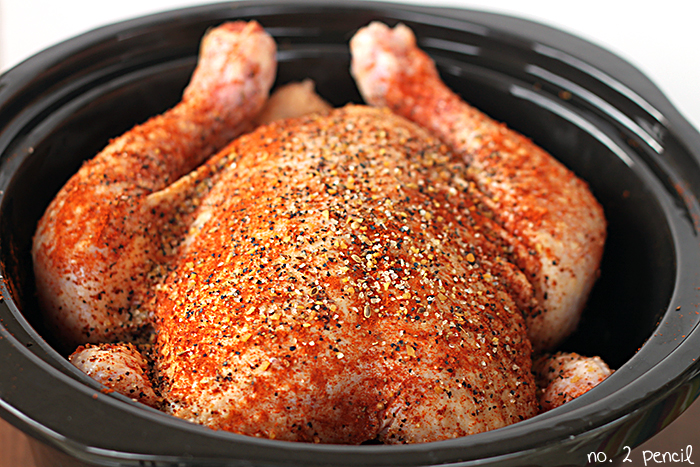
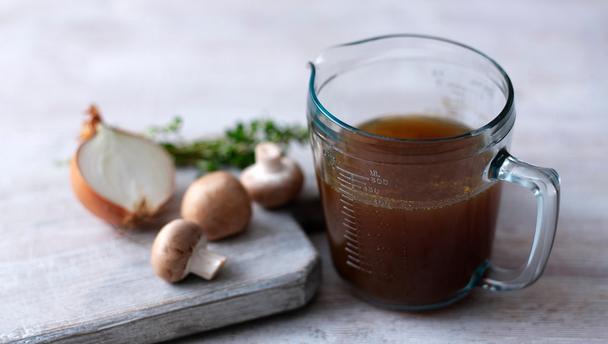
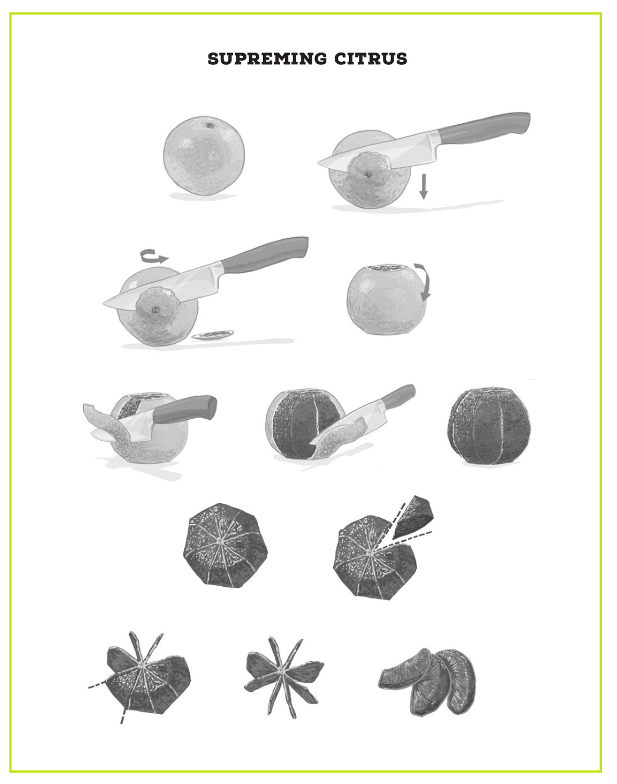

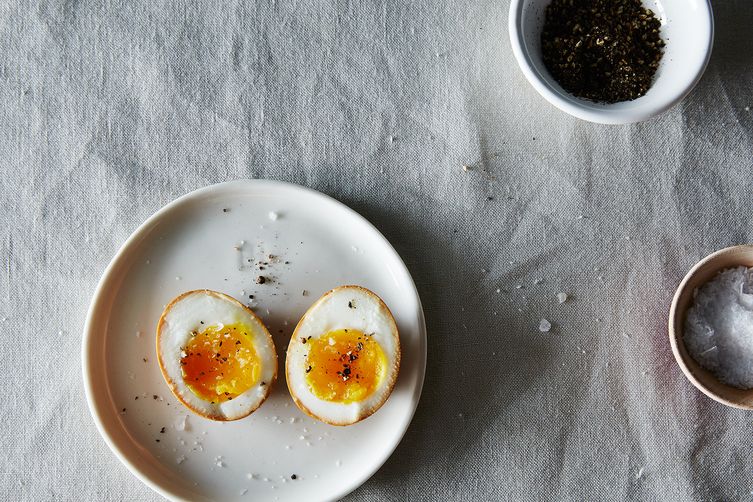
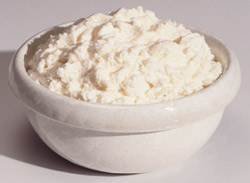
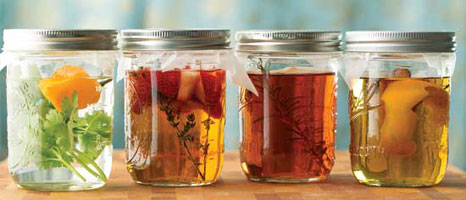
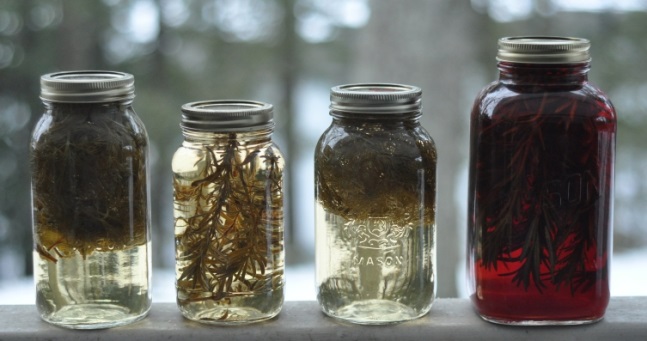
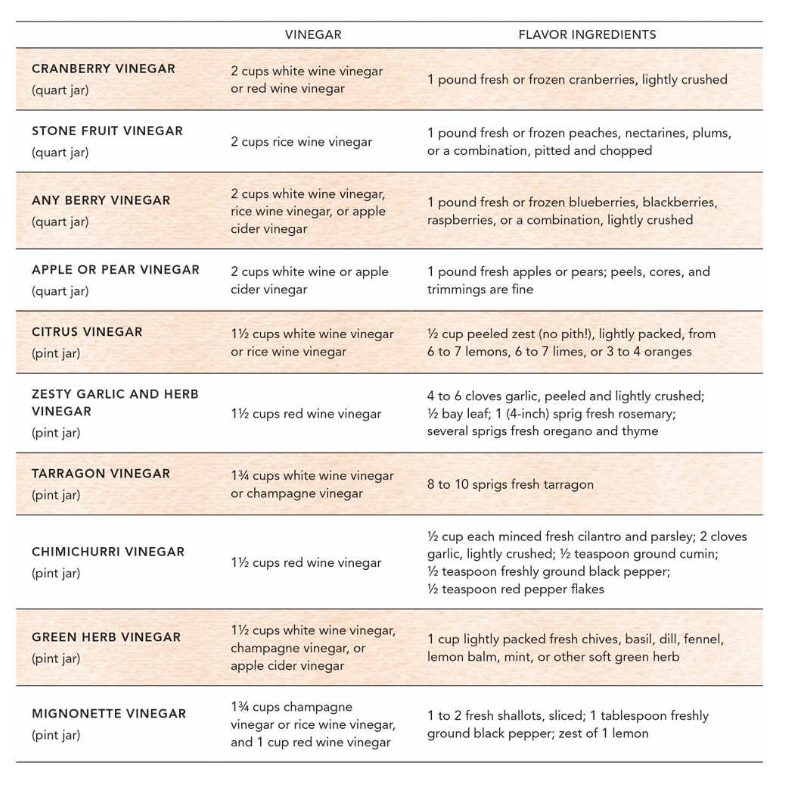
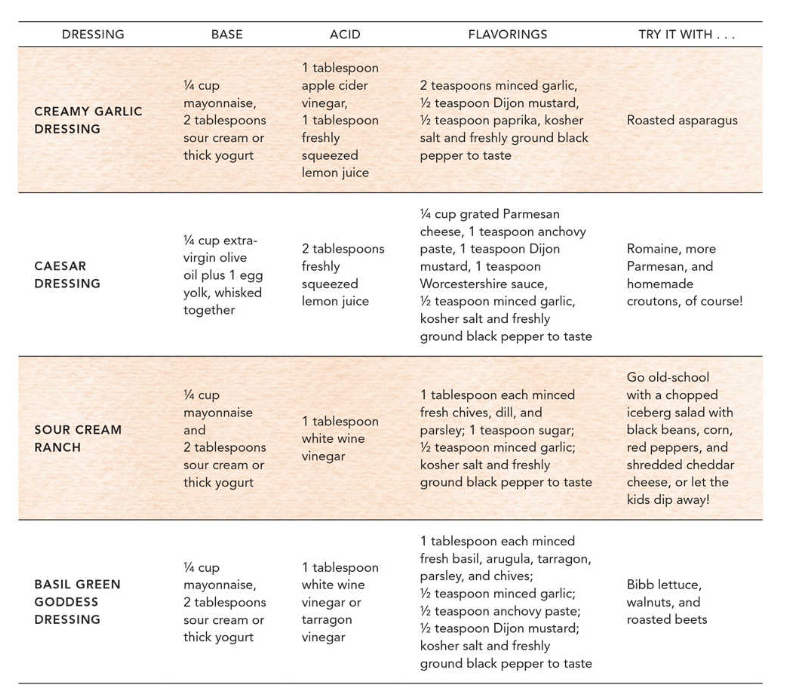
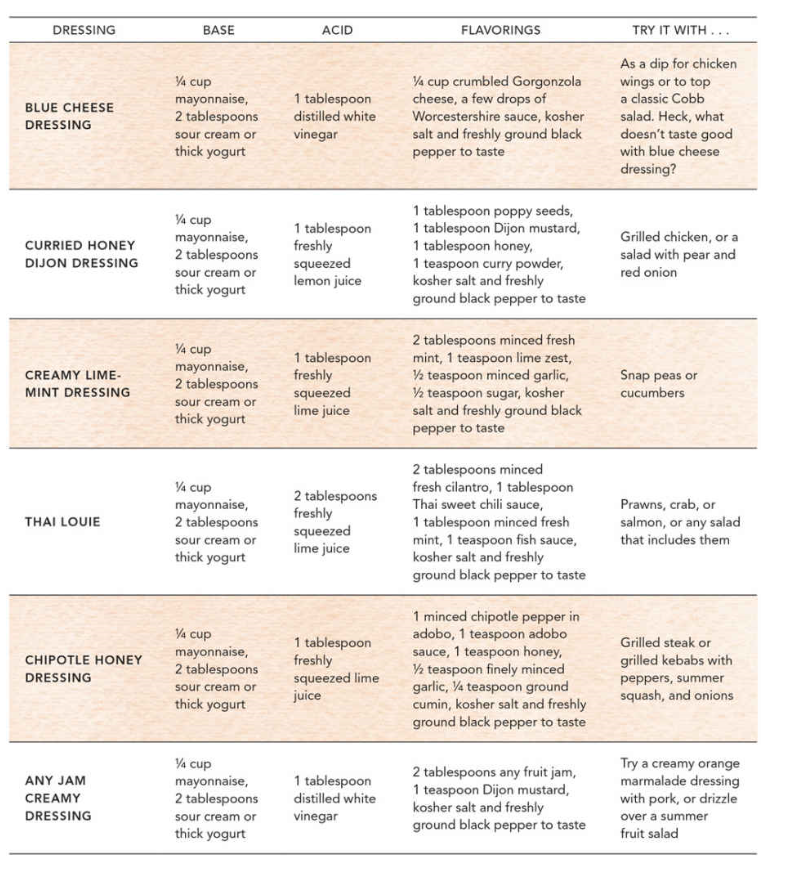
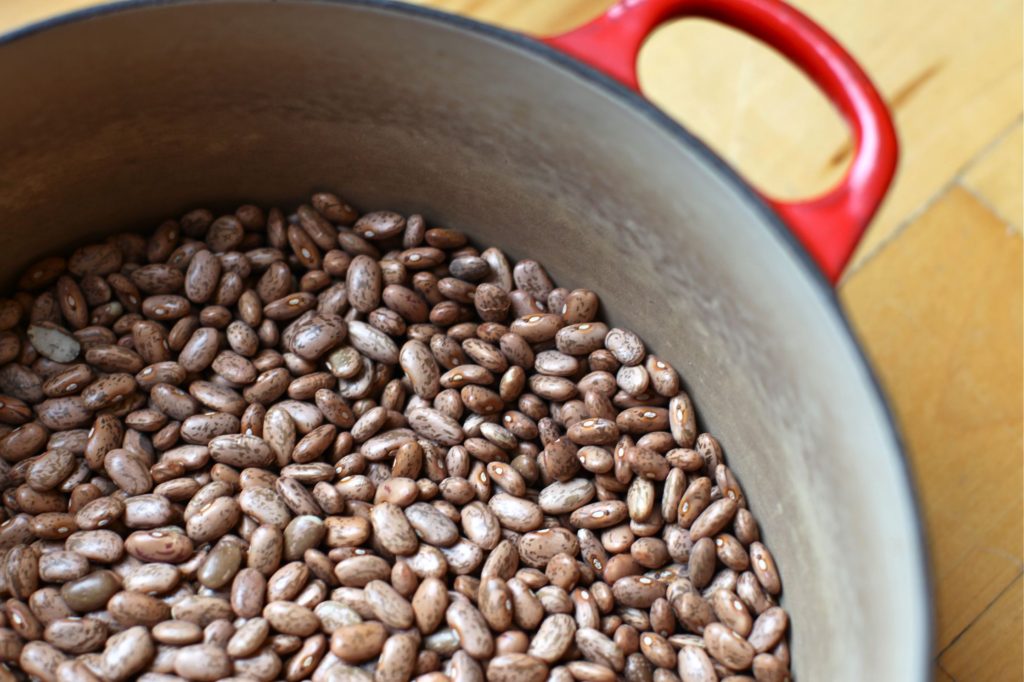
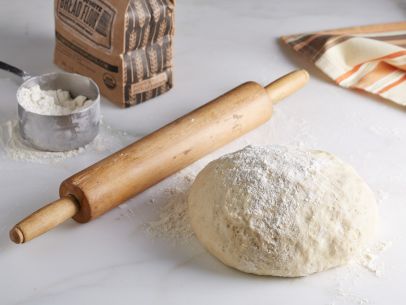

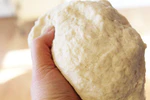 Best Pizza Dough, Period
Best Pizza Dough, Period

 All About Steaks
All About Steaks Browned Butter
Browned Butter Cinnamon Vanilla Sunflower Butter
Cinnamon Vanilla Sunflower Butter